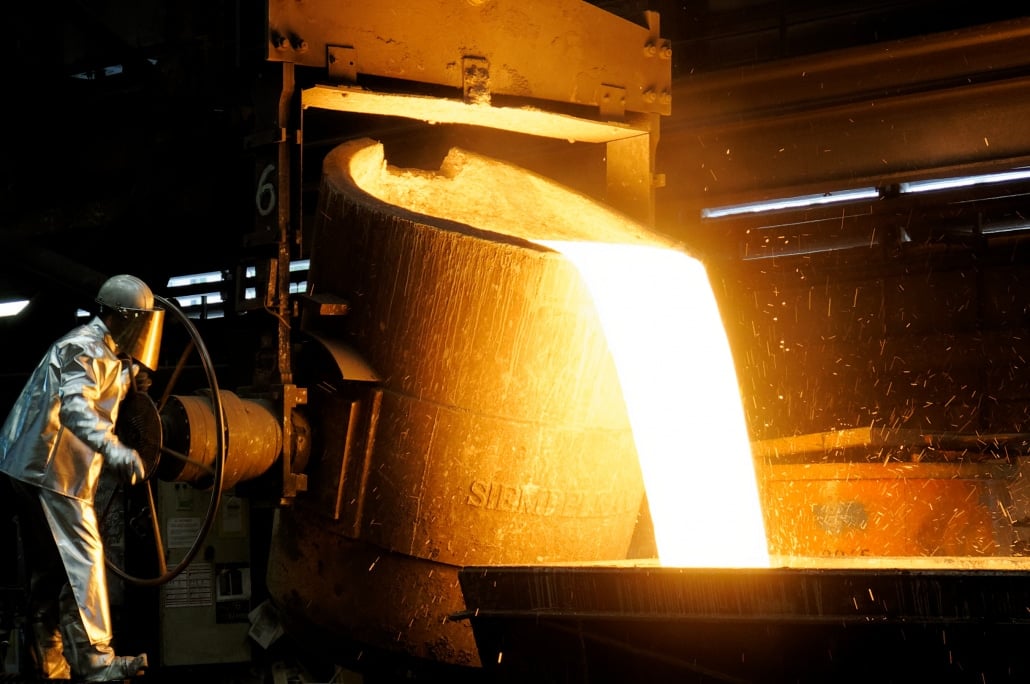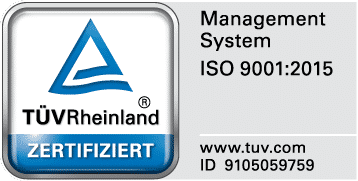Siempelkamp Foundry: LIMS proves itself in practice for 30 years
Whether in energy conversion or raw material processing, in press construction or in general mechanical engineering: Siempelkamp Foundry, headquartered in Krefeld, Germany, is known worldwide for large and heavy castings made of nodular graphite cast iron from 3 to more than 300t. With a casting volume of approximately 60,000 tons per year and 375 employees, Siempelkamp is one of the largest hand-molded foundries in the world and, with its almost 120-year history, is one of the most traditional companies in Germany. The foundry places the highest value on excellent metallurgical know-how and continuous research and development, thus securing its first-class position in the market.
For company-wide quality control, Siempelkamp has relied centrally on Fink & Partner’s LIMS, which is integrated into the system landscape, for 30 years. Delivered in 1992 as software with a spectrometer, today, all chemical analyses are managed and evaluated with the LIMS. Let us show you how [FP]-LIMS proves itself in practice for 30 years.
Picture: Siempelkamp Giesserei GmbH
Siempelkamp Foundry: LIMS as a “safe haven” for complex casting production
The production of hand-formed large castings weighing up to 320 t is a masterpiece and requires extreme precision and optimal process flows because the manufacturing process is not only very elaborate but, above all, very complex. To ensure a high-quality end product, all the company’s production steps must measure up to the industry’s high-quality standards. The requirements for the LIMS, which is used at Siempelkamp primarily for chemical analyses, are no less demanding.
In order to be able to explicitly prove and document the quality and safety of the respective test object, the accredited foundry laboratory uses, among other things, mechanical-technological and metallographic measuring methods, but also optical emission spectrometry, and manual non-destructive testing methods. Every day, around 60 analyses are carried out in the laboratory, which automatically end up in the LIMS and is thus also communicated in the melt store. “Here, above all, it is crucial for us that the LIMS runs reliably and consistently. A failure would be a disaster,” explains Arndt Merten, head of the quality department at Siempelkamp.
“For us, the LIMS from Fink & Partner is primarily a data mining instrument in order to sustainably store data for optimization measures and the intergated management process, and to make it traceable and reproducible. All analysis data from the LIMS also flows into other programs at Siempelkamp, for example, into a CAQ system, where the data can also be evaluated and linked to other processes.”
In total, more than 20 people work with the LIMS on a daily basis, 10 of them in the quality department alone. The software is simply structured, making it easier for every employee to use on a daily basis.
As a manufacturer of cast materials for nuclear technology, among others, data security is also a decisive plus for Siempelkamp with the LIMS from Fink & Partner. “In nuclear technology, we are obliged to archive analysis data for at least 30 years. We know: In LIMS, the data is safe. We can still access data from 1992 – that’s very exciting,” explains Arndt Merten.
Innovative by tradition: Future technologies as an opportunity for today’s challenges
For Siempelkamp, the secure management and evaluation of data generated in the company – whether analysis data or other data generated in casting production – is an important aspect, not only in quality assurance. Only with modern data management can foundries reliably collect, secure, and evaluate the valuable data treasures on which new solutions and business models are based – Arndt Merten is confident of this. But the traditional company is also not afraid of other future technologies. Siempelkamp wants to successively optimize its casting processes by 2024 with the help of AI technologies, i.e., artificial intelligence. In the future, AI will, for example, provide recommendations for action and take over troubleshooting.
Siempelkamp also shows that tradition and innovative strength do not have to be contradictory in their efforts in research and development. Proven experts in the company are constantly researching the optimization of materials and production processes. For example, a project with the LBF Fraunhofer Institute was just completed, which focused on optimizing the manufacturing process of large gears. Whether it is product quality, artificial intelligence, or research and development – Siempelkamp relies on integrated quality management and strives to innovate on all levels in order to position itself for the future.
Picture: Siempelkamp Giesserei GmbH
Innovative spirit promotes a head start in casting
Arndt Merten is convinced that the joy of innovation in combination with the traditional values of the company is the key to success for Siempelkamp Foundry. Digitizing as many process steps as possible and centralizing all data should be the primary goal also in the foundry industry in order to position itself permanently for the future.
The fact that numerous analysis data are still archived on Excel or other isolated solutions is incomprehensible to Merten. “I can’t imagine how our production would function without the LIMS. Measurement data must land in the melt store within a few minutes so that appropriate responses can be made. Then there is the aspect of secure data archiving. How is that supposed to work without a LIMS?”
Arndt Merten particularly appreciates the trusting business relationship between Fink & Partner and Siempelkamp. “Fink & Partner has already been on the market with its LIMS for 30 years and has proven to be a reliable partner during this time.”

Philip Moerke, CEO with extensive experience in LIMS software, combines technical expertise with a clear vision for the future of laboratory information management. His commitment to developing user-friendly LIMS solutions has helped to make laboratories more efficient and data management more accurate. With a deep understanding of the needs of modern laboratories and a hands-on approach to problem solving, Philip Moerke is a trusted partner for laboratories looking for innovative solutions. He is known for his ability to communicate complex technical concepts in an understandable way, making him a valued expert in the industry.
![[FP]-LIMS Software](https://fp-lims.com/wp-content/uploads/2020/06/Fink-Partner-LIMS-Software-Firmen-Logo-e1592470427959-300x250.png)

![Siempelkamp Giesserei LIMS Siempelkamp Giesserei [FP]-LIMS foundry](https://fp-lims.com/wp-content/uploads/2022/08/Siempelkamp-Giesserei-LIMS-1030x684.jpg)



